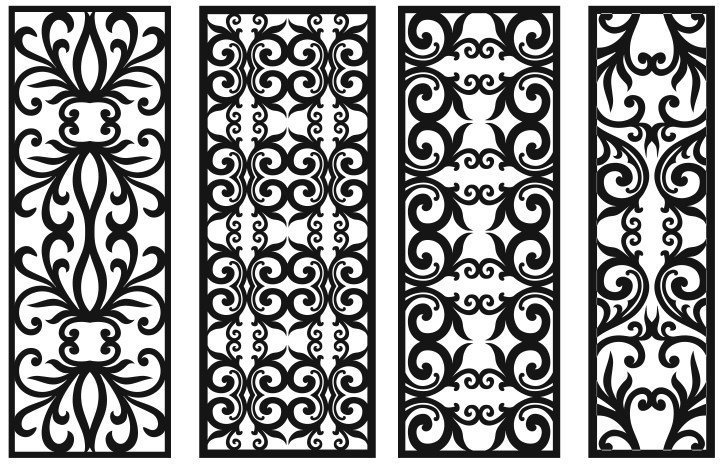<p>In the realm of manufacturing and fabrication, the use of Computer-Aided Design (CAD) files has become indispensable. Among these formats, DXF (Drawing Exchange Format) files hold a pivotal role, particularly in plasma cutting. This article will explore the significance of DXF files, their applications in plasma cutting, and how they empower manufacturers to create custom products efficiently.</p>



<h2 class="wp-block-heading"><strong>What are DXF Files?</strong></h2>



<p>DXF files are vector graphic files created by Autodesk for enabling data interoperability between various CAD programs. This format allows designers and engineers to share their drawings and designs seamlessly across different platforms. DXF files are particularly favored for their versatility and compatibility with numerous cutting machines, including plasma cutters.</p>



<h2 class="wp-block-heading"><strong>The Importance of DXF Files in Plasma Cutting</strong></h2>



<p>Plasma cutting is a popular method for cutting through electrically conductive materials, such as steel, aluminum, brass, and copper. The precision and speed of plasma cutting make it an ideal choice for industries ranging from automotive to aerospace. However, the effectiveness of plasma cutting largely depends on the quality and accuracy of the design files used.</p>



<ol class="wp-block-list">
<li><strong>Precision and Accuracy</strong>: DXF files are crucial in ensuring that the plasma cutting machine follows the design specifications accurately. A well-prepared DXF file can translate complex shapes into precise cuts, reducing material waste and ensuring that the final product meets design criteria.</li>



<li><strong>Ease of Use</strong>: By utilizing DXF files, manufacturers can quickly load designs into their plasma cutting software. This ease of use reduces setup times and streamlines the production process, allowing for faster turnaround on projects.</li>



<li><strong>Customization</strong>: DXF files enable manufacturers to create customized designs tailored to specific project requirements. This flexibility is particularly important in industries where bespoke components are essential, allowing businesses to meet unique customer demands.</li>



<li><strong>Compatibility</strong>: Most plasma cutting machines are equipped to handle DXF files, making this format a standard choice in the industry. This compatibility ensures that designs can be easily shared and processed, regardless of the machine or software being used.</li>
</ol>



<h2 class="wp-block-heading"><strong>Creating DXF Files for Plasma Cutting</strong></h2>



<figure class="wp-block-image size-full"><img src="https://backstageviral.com/wp-content/uploads/2024/09/DXF-Files-for-Plasma-Cutting.jpg" alt="DXF Files for Plasma Cutting" class="wp-image-16126"/></figure>



<p>While DXF files are crucial for plasma cutting, it is essential to understand how to create them effectively. Below are some key considerations when developing <a href="https://dxf4you.com">DXF files for plasma cutting</a> applications:</p>



<p><strong>1. Design Software</strong></p>



<p>To create DXF files, manufacturers typically use CAD software such as AutoCAD, SolidWorks, or Inkscape. Each of these programs offers tools for drafting and designing intricate parts, which can then be exported as DXF files.</p>



<p><strong>2. Simplicity in Design</strong></p>



<p>When preparing a design for plasma cutting, simplicity is key. Complex geometries can lead to complications during the cutting process. It’s advisable to create designs with fewer nodes and clean lines to facilitate smoother cuts.</p>



<p><strong>3. Layering</strong></p>



<p>Using layers in your DXF file can help organize different elements of the design. For example, you might have one layer for cutting paths and another for engraving details. This organization allows for better control during the cutting process.</p>



<p><strong>4. Correct Scale</strong></p>



<p>Ensure that the design is created to the correct scale. Miscalculated dimensions can lead to significant issues during production, resulting in wasted materials and increased costs.</p>



<p><strong>5. Testing and Validation</strong></p>



<p>Before moving to production, it is prudent to test the DXF file. Many plasma cutting software solutions offer simulation features, allowing manufacturers to visualize the cutting process and identify any potential issues with the design.</p>



<h2 class="wp-block-heading"><strong>Applications of DXF Files in Plasma Cutting</strong></h2>



<p>The versatility of DXF files makes them suitable for a wide range of applications in plasma cutting. Here are some common uses:</p>



<p><strong>1. Metal Fabrication</strong></p>



<p>In metal fabrication, DXF files are used to cut components for machinery, structures, and vehicles. The precision of plasma cutting allows manufacturers to produce parts that fit together seamlessly.</p>



<p><strong>2. Sign Making</strong></p>



<p>DXF files are widely utilized in the sign-making industry. Plasma cutting can create intricate designs and lettering from various materials, including metals and plastics, allowing businesses to produce unique and eye-catching signage.</p>



<p><strong>3. Art and Sculpture</strong></p>



<p>Artists and designers often use DXF files to produce metal sculptures and art installations. The capability to cut complex shapes opens up new creative avenues for artistic expression.</p>



<p><strong>4. Automotive and Aerospace Parts</strong></p>



<p>In the automotive and aerospace sectors, precision is paramount. DXF files enable the production of parts that meet stringent safety and performance standards, from brackets and frames to custom components.</p>



<h2 class="wp-block-heading"><strong>The Future of DXF Files in Plasma Cutting</strong></h2>



<p>As technology continues to evolve, the role of DXF files in plasma cutting will likely grow. Advancements in CAD software and plasma cutting technology will enable even more sophisticated designs and efficiencies in production.</p>



<p><strong>1. Integration with CAM Systems</strong></p>



<p>Computer-Aided Manufacturing (CAM) systems are increasingly being integrated with CAD software, making the transition from design to production smoother. This integration can automate the preparation of DXF files, reducing manual input and minimizing errors.</p>



<p><strong>2. 3D Modeling</strong></p>



<p>While DXF files are predominantly 2D, the trend towards 3D modeling in manufacturing is gaining traction. Future iterations of DXF or similar file formats may include enhanced capabilities for 3D designs, further enriching the plasma cutting process.</p>



<p><strong>3. Enhanced Simulation Tools</strong></p>



<p>Improvements in simulation software will provide manufacturers with better tools to visualize and test their DXF files before production. This capability can lead to increased accuracy and reduced material waste.</p>



<h2 class="wp-block-heading"><strong>Conclusion</strong></h2>



<p>DXF files are essential tools in the realm of plasma cutting, offering manufacturers the precision, flexibility, and compatibility necessary to create custom products. By understanding the nuances of creating and using DXF files, manufacturers can leverage this technology to enhance their production capabilities. As the industry continues to evolve, staying informed about advancements in DXF file applications will ensure that businesses remain competitive in a dynamic market.</p>

Understanding DXF Files for Plasma Cutting: A Comprehensive Guide

